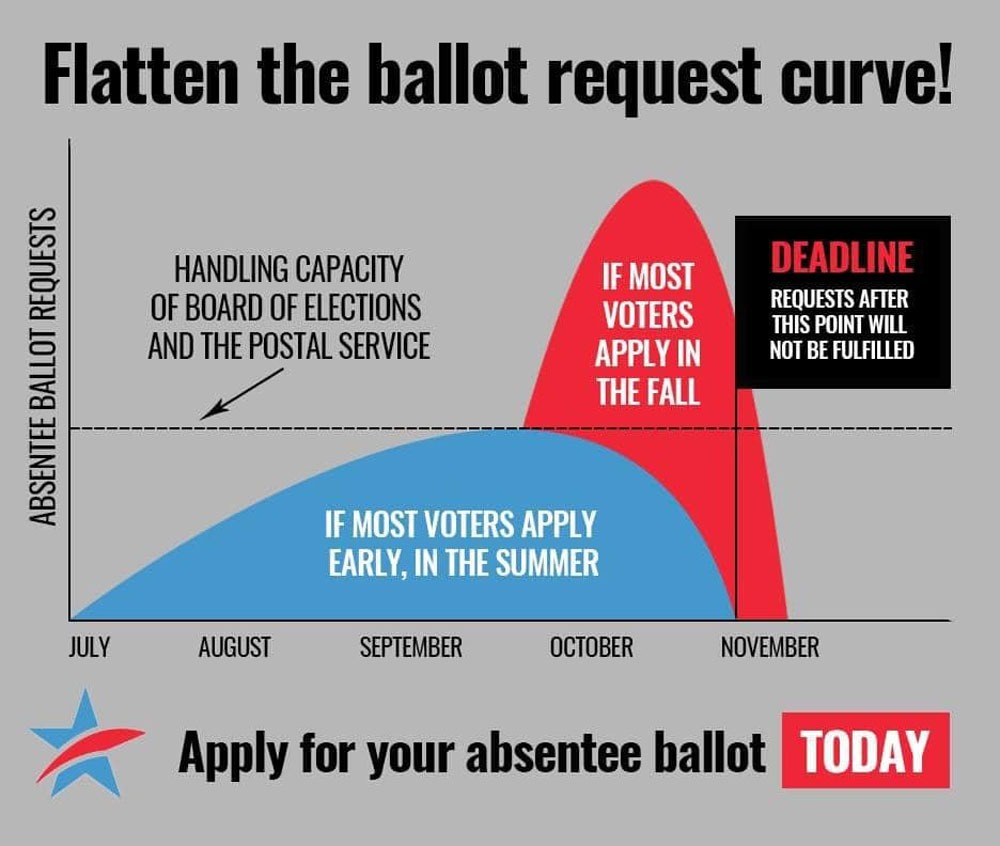
July 2, 2020; Washington Post, Slate, and the New York Times
“Legal battles in about two dozen states are now poised to shape the details of how roughly 130 million registered voters are able to cast ballots in upcoming contests, with more than 60 lawsuits related to absentee voting and other rules wending their way through the courts,” reports the Washington Post. And if recent federal court decisions are any indication, those expecting the courts to step in and enforce fair voting procedures may well be disappointed.
Take, for instance, the US Supreme Court’s recent order upholding Alabama’s electoral policies, which have been described as some of the nation’s harshest. Under state law, Alabama requires each voter to find a public notary or recruit two other adults to sign their absentee ballot as witnesses. The state also mandates a copy of a state-approved voter ID be provided when a mail-in ballot is requested, and another copy may also need to accompany the ballot itself. In normal times, many eligible voters would find meeting these conditions difficult. When physical distancing is a public health mandate, the obstacles are even greater.
In asking a US district court judge to intervene, the NAACP’s Legal Defense and Educational Fund, challenged the state, pointing out that these rules “create nearly insurmountable barriers to exercising the fundamental right to vote amid the COVID-19 pandemic.”
The district court agreed, and it ordered the requirements to be relaxed. An appeals court upheld that ruling, but last Thursday, the Supreme Court, in a 5–4 decision, allowed Alabama to keep its harsh rules in place. Their rationale, similar to rulings in prior cases, is that there is no reason to make rule changes so close to the election. The state’s brief, as covered by Adam Liptak for the New York Times, dismisses and minimizes the difficulty and risk:
Nothing requires voters to lock arms with their witnesses, or for a signatory and witnesses to unmask themselves before the signing. A particularly cautious voter could meet her witnesses outside or in a large room and then each sign the piece of paper—with everyone remaining masked and staying six feet or more from one another. In fact, there is nothing to prevent the witnesses from watching the voter sign from a different room entirely or through a window, such that the voter need never be in the same room as the witnesses.
Sign up for our free newsletters
Subscribe to NPQ's newsletters to have our top stories delivered directly to your inbox.
By signing up, you agree to our privacy policy and terms of use, and to receive messages from NPQ and our partners.
Behind the antiseptic nature of the state’s legal pleadings is a more sinister bias. Secretary of State John Merrill, when asked by a voter on social media how to comply with the photo ID requirement, tweeted, “When I come to your house and show you how to use your printer I can also show you how to tie your shoes and to tie your tie. I could also go with you to Walmart or Kinko’s and make sure that you know how to get a copy of your ID made while you’re buying cigarettes or alcohol.”
The Supreme Court’s ruling upholding the Alabama law is no isolated case. Last week, for example, NPQ wrote about a federal appeals court that found that although changes to Wisconsin’s election laws might suppress voting by people of color, that was not of the court’s concern, as long as the intent was partisan (in this case, Republican Party) advantage, a legitimate form of discrimination in the court’s eyes.
In a recent Slate article about criminal justice, Mark Kende and Dahlia Lithwick observe that the US Supreme Court has often allowed racially discriminatory practices to slide, as long as discriminatory “intent” cannot be proven. In the 1976 case of Washington v. Davis, for example, the Court said it was not enough to show a pattern of racially disparate impact, even if well documented; instead there needed to be a proven and specific intent to discriminate. This “discriminatory intent became a kind of unprovable holy grail in any effort to redress racist policies,” since “a state simply had to assert a reasonable public interest to justify laws, such as promoting health, safety, or morals.”
“The US Supreme Court’s cramped reading of the equal protection clause in the 1970s,” say Lithwick and Kende, “has actively subjected people of color to unfair treatment across the decades.”
State by state, officials have learned to keep their mouths shut while passing laws with exclusionary intent. When it comes to making sure all voters can vote, the Court has “determined that voter ID laws prevent fraud, although there was almost no evidence of voter fraud that warranted curing. So: Black voters are prevented from using the not-particularly-neutral voting system to redress the not-particularly-neutral laws that are used against them in the criminal law apparatus.”
In this fall’s election, racial justice will surely be a central issue, making these discriminatory voting practices particularly disturbing. Clearly, defending the right to vote will be critical in the nation’s upcoming November general election.—Martin Levine













